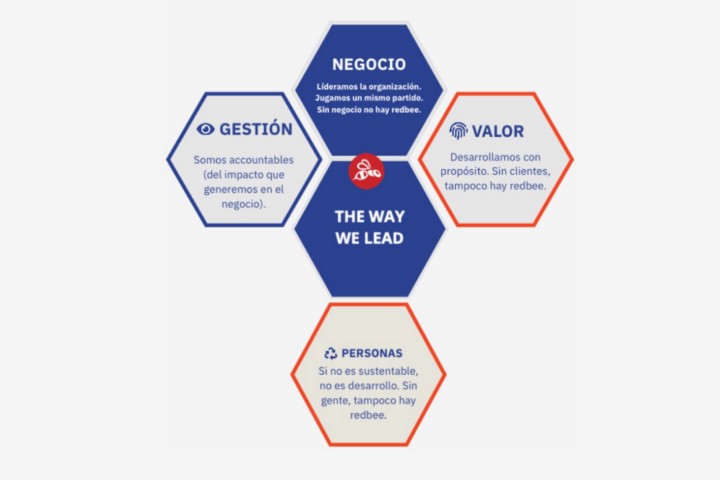My father always tells this anecdote: during an exam back in Agronomy school, the teacher asked one classmate where would he grow yerba mate, a typical cultivation in Argentina. He answered: “In Patagonia,” one of the most inhospitable climates for this crop.
The teacher said, “It can’t possibly grow there.” And his classmate replied: “The farm is mine and I’ll locate it wherever I want to.” He evidently failed the exam, but we’re still laughing at this anecdote at the family table.
Notice: before you keep on reading, let me warn you that I’ll exploit environmental images to the maximum during my argumentation.
Having said that, follow me to discuss leadership and culture through climate and farming metaphors.
What’s the Weather Like in an Organization?
In LinkedIn, it’s common to see numerous posts very similar to one another: someone you know got a certification, one company wants to tempt candidates with a package of benefits, this other organization boasts about its great working environment. In most cases, that’s all true. Some companies promote the right atmosphere for talent to grow and flourish, getting the best out of the people working there.
The atmosphere is the context that creates the adequate psychological, emotional and rational conditions that improve everyone’s performance and wellbeing. Then there’s also the real feel, the perception and interpretation of the company’s definitions.
A good atmosphere certainly makes those basic conditions possible. Today, in the mega competitive world we live in, they have become not only necessary but a prerequisite for organizations.
Previously I talked about cultural springs –strategic levers that HR professionals design, implement and help others put into practice. Considering that culture as a concept is live and organic, I wonder if there’s any organization that’s not experiencing a cultural shift nowadays. That’s why it’s important to consider the atmosphere and, above all, the real feel, or focused atmosphere, as I put it.
Focused Atmosphere: Cultivate What Your Organization Needs
When I talk about focused atmosphere, I mean thinking and acting towards generating the best conditions for the people’s wellbeing and performance. It’s thinking of the behaviors we want to harvest in the organization in the future, and start promoting now concrete actions that will help us achieve the projected goals working under desired conditions.
Nevertheless, we can have the best practices, policies and processes, but if leaders don’t follow nor promote them, all the more in a virtual context, the real organizational culture will differ enormously from what’s intended to be.
So far, we can draw two preliminary conclusions.
- There’s an organizational culture.
- There’s an organizational culture, independently of how the leadership wants it to be.
We can’t afford to “locate it wherever I want to”. At redbee we’ve been working hard to prepare a fertile soil in which our culture, professional development, and human and professional quality can thrive, in order to enhance our teams’ performance, today and every day of the year.
As leaders at redbee, we’re leading the business.
We believe that it’s essential for people leading teams to understand that we’re all playing in the same team. There’s no redbee if we don’t achieve our goals, if we don’t conduct our business. So, with that premise in mind, we designed a leadership model grounded on three elements:
- People: We’re cultural leaders. We form a team with our client and conversely, we make our team feel they’re clients. People are at the center of this concept.
- Management: We’re accountable. We’re responsible for the impact we generate on the business, of the processes and results. We make decisions based on data.
- Value: We generate value. We always seek to maximize value and make it visible; we take action and we deliver.

The Aspects of Our Leadership Model
The Aspects of Our Leadership Model
We’ve planted the seed. But if we don’t water it regularly in the adequate measure, it won’t blossom (focused atmosphere). So, starting this year, we’ve launched a leaders development program named redbeeLead with the premise that people know, want and can. The aim is to organize events and develop content all throughout the year to do leadership training and develop abilities, knowledge and, above all, redbeeLead y sobre el cual de manera constante (casi literalmente todo el año) a growth mindset that will allow us to achieve our goals for 2025.
“That sounds great, though my manager should be the one reading this.” We know that. We know that company growth must come from all levels of leadership, regardless seniority or roles. “But how will you go about it? Will the training start at C-level and then go down?” We’ve already thought that through.
A Growing Ecosystem
We’ve embraced the task in a holistic and systemic way, summoning all of redbee’s leaders to train in parallel, therefore feeding the program simultaneously with data that come up during the different training sessions.
A plant won’t blossom just with water, it also needs heat and other enabling conditions. Following the metaphor, for learning we need people to:
- Attend the sessions.
- Participate in group of peers.
- Discuss individual challenges on the field. (This may be the most precise Agronomy reference in the whole article.)
The season has just begun and we’ve started to see the first seedlings. I’m sure that in the following years more will flourish in redbee’s pollination effort to generate the best atmosphere to grow talent and obtain results. (Not bad for a concluding metaphor, right?)
